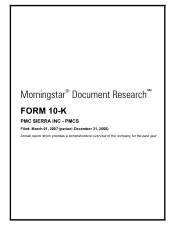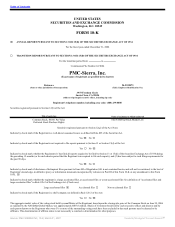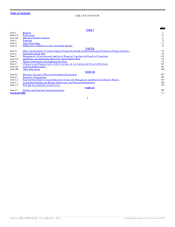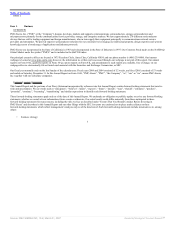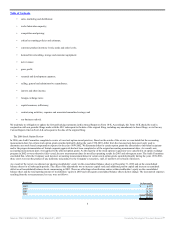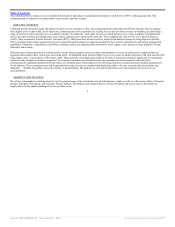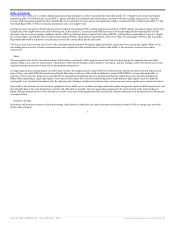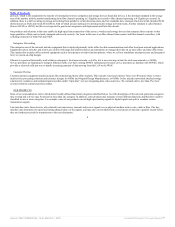Adaptec 2006 Annual Report Download - page 10
Download and view the complete annual report
Please find page 10 of the 2006 Adaptec annual report below. You can navigate through the pages in the report by either clicking on the pages listed below, or by using the keyword search tool below to find specific information within the annual report.
Table of Contents
protocol, which is the standard for the transfer of information between computers and storage devices (hard disk drives), is the dominant standard in the storage
area of the market, with the market transitioning from fibre channel operating at 2 Gigabits per second to fibre channel operating at 4 Gigabits per second. In
addition, there is a shift occurring in storage networking from parallel to serial interconnections and two standards have emerged which are Serial-Attached SCSI
(better known as SAS) and Serial ATA (SATA), both of which are just starting to be introduced into storage networks today. Another standard is called Internet
Protocol SCSI (or iSCSI), but this is not expected to gain broad acceptance and deployment until later this decade.
Our products and solutions in this area enable the high-speed interconnection of the servers, switches and storage devices that comprise these systems so that
large quantities of data can be stored, managed and moved securely. Our focus in this area is on fibre channel interconnect and fibre channel controllers, with
switching solutions for both SAS and SATA.
Enterprise Networking
The enterprise area of the network includes equipment that is deployed primarily in the office for data communications and other local area network applications.
Equipment such as switches and routers are used by both large and small businesses and enterprises to manage their data on an inter-office and intra-office basis.
This market also includes office network equipment such as laser printers or multi-function printers, where we sell our standalone microprocessors and integrated
SoCs or system-on-chip designs.
Ethernet is a protocol historically used within an enterprise’s local area networks, or LANs, but is now moving out into the wide area networks, or WANs.
Service providers are beginning to transport Ethernet traffic over their existing SONET infrastructure because service providers are familiar with SONET, which
provides a relatively efficient way to handle increasing amounts of data moving from the LAN to the WAN.
Customer Premise
Customer premise equipment usually includes the residential and home office markets. This includes wired and wireless Voice-over-IP routers where we have
multi-service processing solutions and reference designs for OEMs and Original Design Manufacturers, or ODMs. It also includes networked attached storage
solutions for residences and residential gateways that enable “triple play” services integrating data, video and voice. We currently derive less than 5% of our
revenues from the customer premise market.
OUR PRODUCTS
Most of our semiconductors can be divided into broadly defined functional categories identified below. As with descriptions of the network, particular categories
may overlap and a device may be present in more than one category. In addition, some products may integrate several different functions and therefore could be
classified in one or more categories. For example, some of our products convert high-speed analog signals to digital signals and split or combine various
transmission signals.
Line interface units: these devices, also referred to as transceivers, transmit and receive signals over a physical medium such as wire, cable or fiber. The line
interface unit determines the speed and timing characteristics of the signals, and may also convert them from a serial stream of data into a parallel stream before
they are further processed for transmission to the next destination.
8
Source: PMC SIERRA INC, 10-K, March 01, 2007 Powered by Morningstar® Document Research℠

